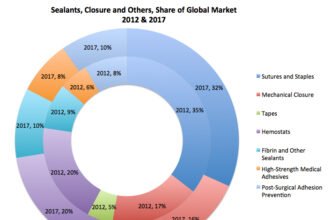 About the time the Affordable Care Act (often labeled Obamacare) was enacted a few years ago, the trend in hospital physician hiring took a distinct upswing. Various data sources that track the whereabouts of doctors generally agree that we’ve passed a tipping point.
About the time the Affordable Care Act (often labeled Obamacare) was enacted a few years ago, the trend in hospital physician hiring took a distinct upswing. Various data sources that track the whereabouts of doctors generally agree that we’ve passed a tipping point.
 About the time the Affordable Care Act (often labeled Obamacare) was enacted a few years ago, the trend in hospital physician hiring took a distinct upswing. Various data sources that track the whereabouts of doctors generally agree that we’ve passed a tipping point. About 50 to 60 percent of physicians now work for a hospital-owned practice or health system, and the trend is continuing.
About the time the Affordable Care Act (often labeled Obamacare) was enacted a few years ago, the trend in hospital physician hiring took a distinct upswing. Various data sources that track the whereabouts of doctors generally agree that we’ve passed a tipping point. About 50 to 60 percent of physicians now work for a hospital-owned practice or health system, and the trend is continuing.
The business concept is a long-term investment for hospitals, anticipating a future delivery system keyed to an Accountable Care Organization (ACO) structure. More immediately, hospitals anticipate a return from physician referrals, admissions, tests and procedures.
But it doesn’t always work according to that plan, at least in the short term. For one thing, “many clinicians are unaware that hospitals lose money on their employed physicians,” according to this Perspective in the New England Journal of Medicine, “though hiring them may be a wise long-term investment.”
“Hospitals lose $150,000 to $250,000 per year over the first 3 years of employing a physician—owing in part to a slow ramp-up period as physicians establish themselves or transition their practices and adapt to management changes.”
Physician hiring does not immediately launch a wave of inbound referrals and new business. “New primary care physicians (PCPs) contribute nearly $150,000 less to hospitals than their more-established counterparts; among specialists, the difference is $200,000. For hospitals to break even, newly hired PCPs must generate at least 30 percent more visits, and new specialists 25 percent more referrals, than they do at the outset.”
The “bottom line” about this bottom line view is that employing physicians is no guarantee of an increased referral stream from general practitioners or specialists. And, as UBM Medica Insights observes, “Hospitals that don’t use good marketing to communicate and build relationships with employed physicians are missing opportunities.”
They list four key reasons Why Hospitals with Employed Physicians Still Need Physician Marketing:
“Employing physicians does not guarantee their referrals. If the physician doesn’t know about a service or specialist available in the hospital system, he will refer out. Employed physicians still need to know about what the healthcare systems offers and who is who.
“Employing a specialist does not guarantee their referral stream. Without solid communications, primary care physicians in the community might not keep referring to the now-employed specialist. Indeed, as hospitals employ more physicians they become competitors of those physicians remaining in the community. An employed specialist still needs help with referrals, internally and from the remaining community physicians.
“Financial incentives for employed physicians only change behavior so much, and can be risky. Good management isn’t about bribery and coercion. It’s about having a system of shared beliefs and motivations, a shared mission. That takes marketing.
“The point is to coordinate care, not just dominate a market. Everyone is preparing for a future where reimbursement reflects quality, outcomes and cost control, not just productivity. [But] a philosophy centered on physician acquisition for its own sake…doesn’t change a mindset or improve care coordination. Genuine integration and improvement is all about sharing information and making connections.
“In other words, it’s all about marketing and communications.”
You’ll want to read the full UBM Medica article [online here]. And, among our previous posts, read: Referral Pipeline Rules Made Simple.







